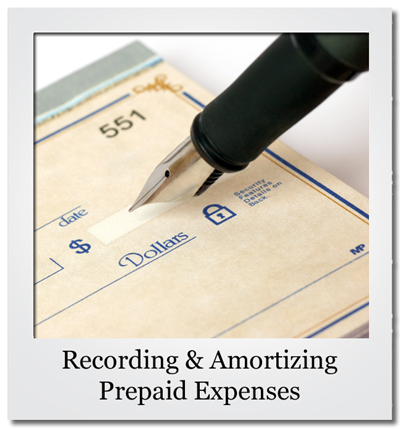
 Recording and Amortizing Prepaid Expenses
Recording and Amortizing Prepaid Expenses

You are reviewing the P&Lís for the completed year. Overall, profits were pretty good, but as you compare profits from month to month, you notice significant variations in monthly profits not explained by sales or product cost variations.
When you look at the components of the bad months, you see some unusually high expenses. January has a $10,000 expense due to the retainer you paid your attorney to handle legal matters. In May and November, you paid the television station $24,000 for the ad campaign that runs for the next six months. To prepare for the summer season, you spend $36,000 on replacement china and silverware in May. Insurance is payable twice a year ($8,000) in March and October. Licenses ($15,000) are renewed in February.
Each of these months has much lower profits than the months without these large expenses. You wonder, how can I make my P&Lís more meaningful throughout the year, giving me a better picture of how I am really doing?
There is an answer to this problem. Each of the payments noted above benefits more than one month. The expenditure can be recorded as a Prepaid Expense and thus becomes an asset on the Balance Sheet. You expense part of the asset each month by amortizing it over the months benefited. This is done by charging the appropriate Expense Account, i.e. Advertising Expense, on the Income Statement and reducing the asset by that amount.
China and silverware replacements carry you through an entire year until another replacement purchase is made. Thus, it is amortized over 12 months. The Advertising campaign lasts 6 months, and is amortized over 6 months.
To keep track of the monthly amortization, the Bookkeeper sets up a spreadsheet. The expense accounts affected become the column headings. They are added across to the Total column and should agree to the General Ledgerís Prepaid Expenses amount.
The spreadsheet shows the payments made during the year and amortization charged each month. In May, the $24,000 Advertising Campaign and $36,000 in replacement china and silverware is entered in the Advertising, China/Silverware, and Total columns.
Replacement China/Silverware is divided by 12 resulting in a $3,000 monthly charge. The Advertising payment covering 6 months is divided by 6, resulting in $4,000 charged to Advertising for each of 6 months.
If Prepaid Expenses are not properly tracked and expensed, they may be overvalued. The Operator should periodically ask the Bookkeeper to see the Prepaid Expenses spreadsheet. Agree the total on the spreadsheet to the General Ledger balance. Compare the monthly amounts charged to each account to the payment total to ensure the amounts look reasonable. Ask the Bookkeeper to explain anything that looks odd.
To help you manage your business, the P&L needs to show the cost of doing business each month, not merely list expenditures made. By recording expenditures benefiting several months as Prepaid Expenses and amortizing them over the periods benefited, your P&L will provide more meaningful information that will enable you to make better informed decisions.
(RETURN)
